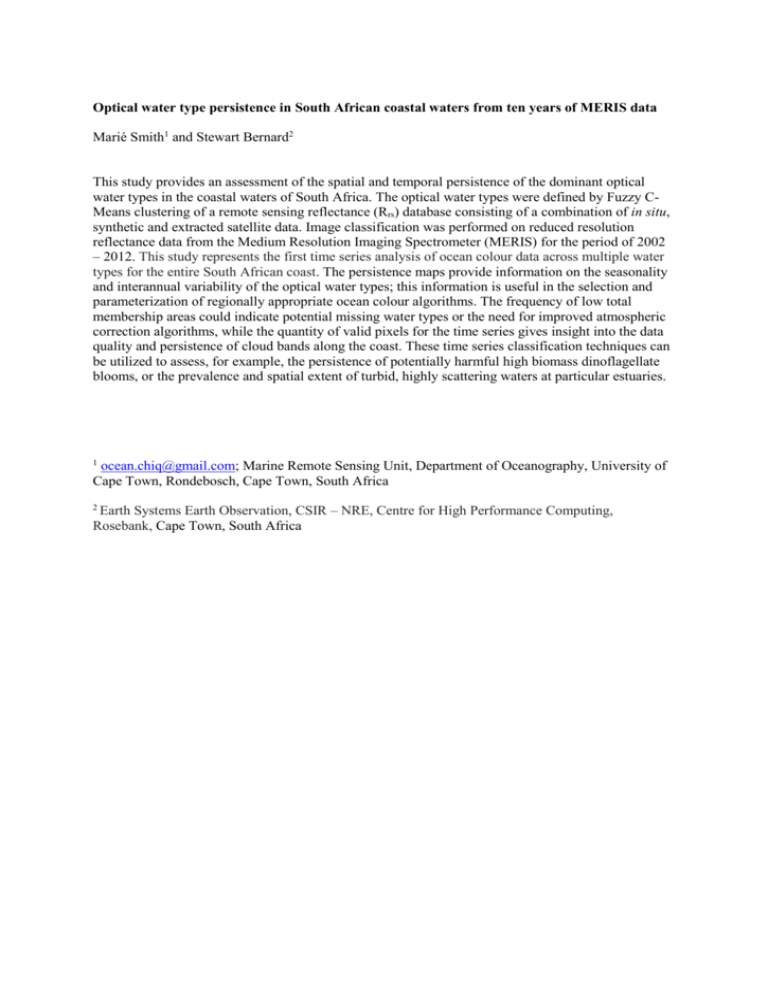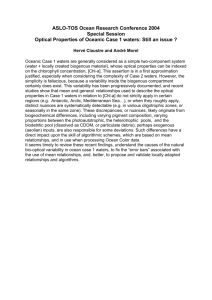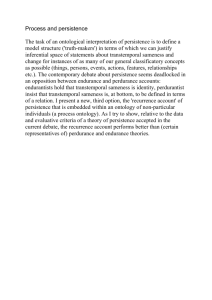Optical water type persistence in South African coastal waters from
advertisement

Optical water type persistence in South African coastal waters from ten years of MERIS data Marié Smith1 and Stewart Bernard2 This study provides an assessment of the spatial and temporal persistence of the dominant optical water types in the coastal waters of South Africa. The optical water types were defined by Fuzzy CMeans clustering of a remote sensing reflectance (Rrs) database consisting of a combination of in situ, synthetic and extracted satellite data. Image classification was performed on reduced resolution reflectance data from the Medium Resolution Imaging Spectrometer (MERIS) for the period of 2002 – 2012. This study represents the first time series analysis of ocean colour data across multiple water types for the entire South African coast. The persistence maps provide information on the seasonality and interannual variability of the optical water types; this information is useful in the selection and parameterization of regionally appropriate ocean colour algorithms. The frequency of low total membership areas could indicate potential missing water types or the need for improved atmospheric correction algorithms, while the quantity of valid pixels for the time series gives insight into the data quality and persistence of cloud bands along the coast. These time series classification techniques can be utilized to assess, for example, the persistence of potentially harmful high biomass dinoflagellate blooms, or the prevalence and spatial extent of turbid, highly scattering waters at particular estuaries. 1 ocean.chiq@gmail.com; Marine Remote Sensing Unit, Department of Oceanography, University of Cape Town, Rondebosch, Cape Town, South Africa Earth Systems Earth Observation, CSIR – NRE, Centre for High Performance Computing, Rosebank, Cape Town, South Africa 2











